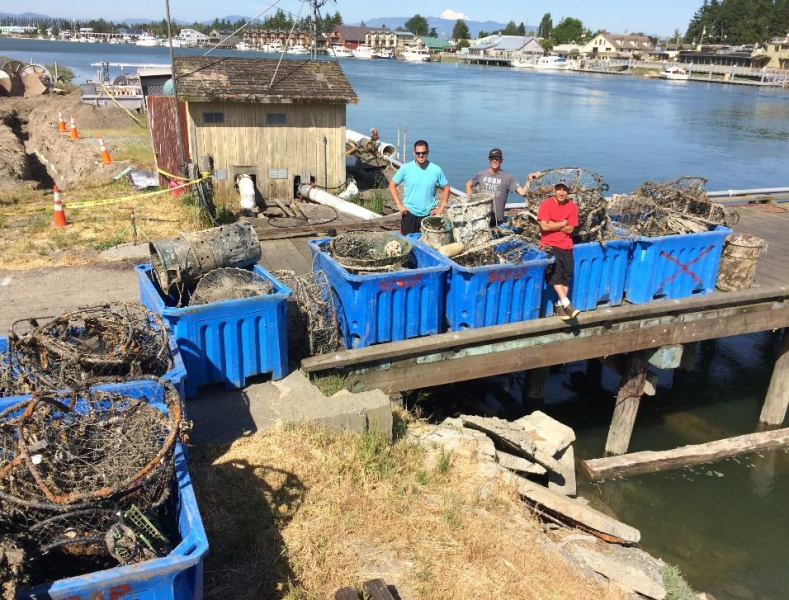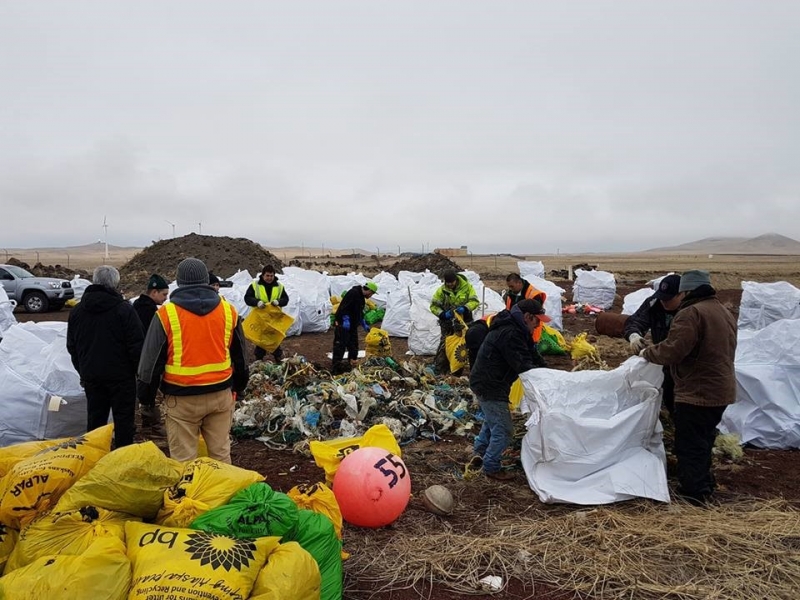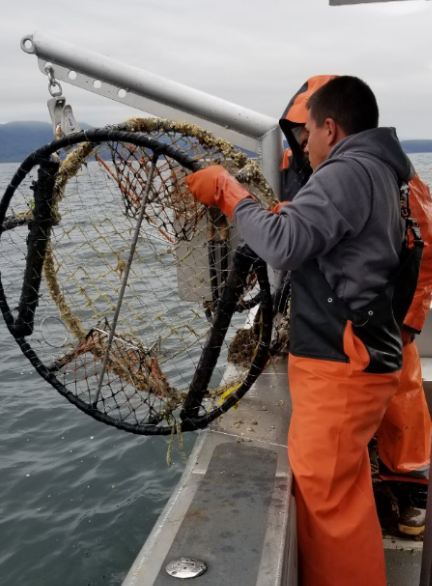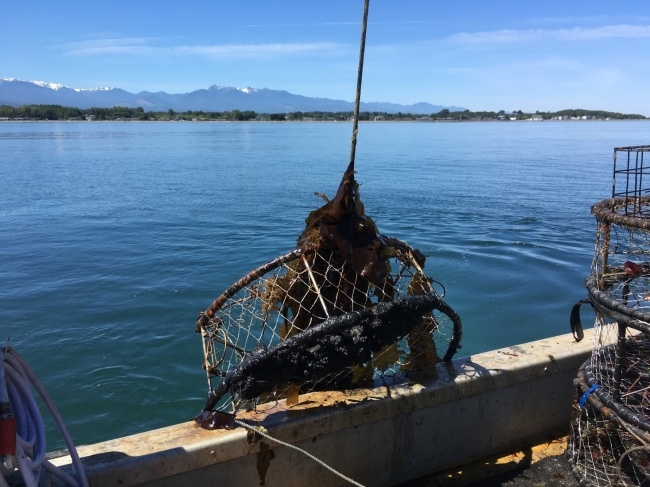In celebration of National Native American Heritage Month, the NOAA Office of Response and Restoration’s Marine Debris Program and Assessment and Restoration Division are highlighting examples of collaboration with native communities, nations, and peoples.
Indigenous communities have a deep understanding of and relationship with the natural environment, which has fostered expert and nuanced traditional ecological knowledge, and shaped cultural practices and identity. NOAA recognizes the importance of indigenous peoples' traditional knowledge for understanding the environment, adapting to environmental change, and improving the health of environments that we all depend on. The Marine Debris Program (MDP) is proud to work with indigenous communities in Alaska and the Pacific Northwest to understand and reduce the impacts of marine debris through projects that prevent and remove marine debris.
Derelict fishing gear refers to nets, lines, crab/shrimp pots, and other recreational or commercial fishing equipment that has been lost, abandoned, or discarded in the marine environment. Derelict fishing gear has numerous impacts including ghost fishing, risks to navigation, and habitat damage. In the Pacific Northwest, the NOAA Marine Debris Program has partnered with the Makah Tribe to remove derelict crab pots and lines within the Olympic Coast National Marine Sanctuary, as well as the Makah Tribe’s Usual and Accustomed Fishing Area. The Makah Tribe Fisheries Management, in collaboration with the Makah Resource Enforcement, has completed both aerial and on-water surveys and is using that information to locate and remove lost crab pots.
Another effort to address derelict fishing gear is taking place in Similk Bay in Washington State. The Swinomish Indian Tribal Community, in partnership with Natural Resources Consultants, Inc. (NRC) and the NOAA Marine Debris Program, is working to survey for and remove derelict fishing gear. Building off of a successful pilot project, the Swinomish Indian Tribal Community will utilize side scan sonar to locate marine debris. With that information, commercially certified Tribal SCUBA divers will remove existing marine debris, estimated at 12 derelict nets and over 200 derelict crab pots. The project will also promote marine debris awareness and reduce the impacts of derelict fishing gear in Similk Bay.

Alaska’s remote location and extensive and rugged coastline presents unique challenges to addressing marine debris and requires innovative and creative approaches. Today, the Aleut Community of St. Paul Island continues their legacy of stewardship by conducting shoreline cleanups on St. Paul Island, St. George Island, and Otter Island, integrating the use of unmanned aircraft system (UAS) aerial surveys to target removal actions and avoid wildlife impacts. Tune in later this month for a guest blog from the Aleut Community sharing more about this NOAA Marine Debris Program supported project.

(Photo: Aleut Community of St. Paul Island).
The North Slope Borough’s Department of Wildlife Management in Alaska is working to carry out the Iñupiaq value of “Respect for Nature” as well as their own goal “to provide for the protection of the Borough’s wildlife resources.” In partnership with the NOAA Marine Debris Program, they are embarking on a project aimed at reducing marine debris through community cleanups and educating students and residents on the impacts of marine debris, with a focus on how to prevent single-use plastics from entering the environment. They are looking to support long-term behavior change using pre- and post-surveys to assess knowledge gained and retained, and by conducting continued outreach to villages through beach cleanups and re-emphasizing prevention messaging.
The MDP is proud of these partnerships and the important work being done. Projects like these are an important part of supporting indigenous stewardship and communities. To learn more about these and past projects visit the Marine Debris Program Clearinghouse. Keep your eye on our blog and the Office of Response and Restoration blog throughout the month for more on our collaborative projects with native communities.



